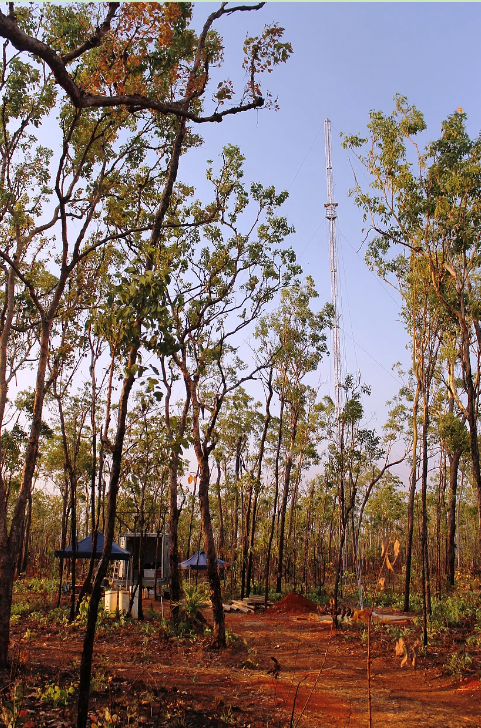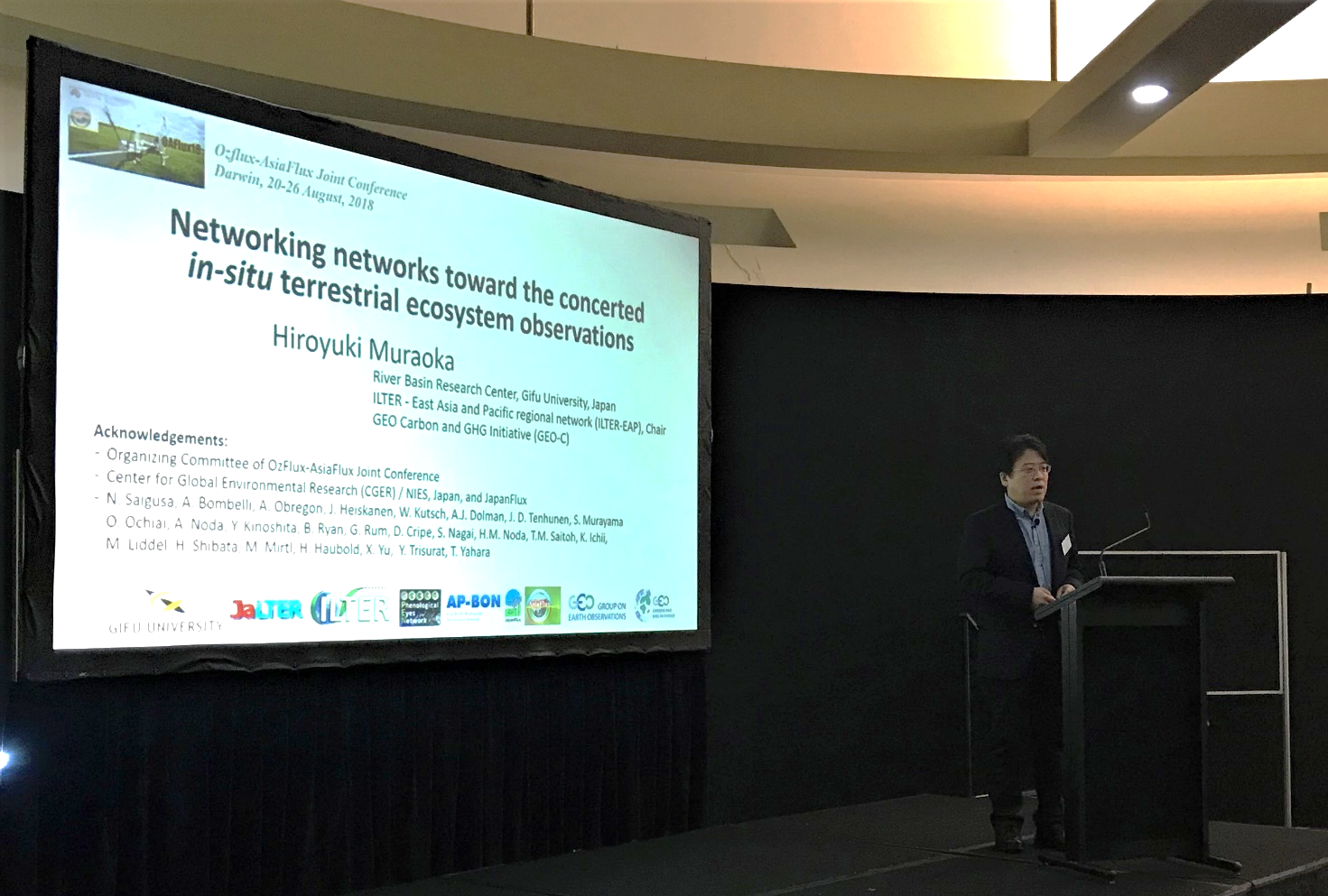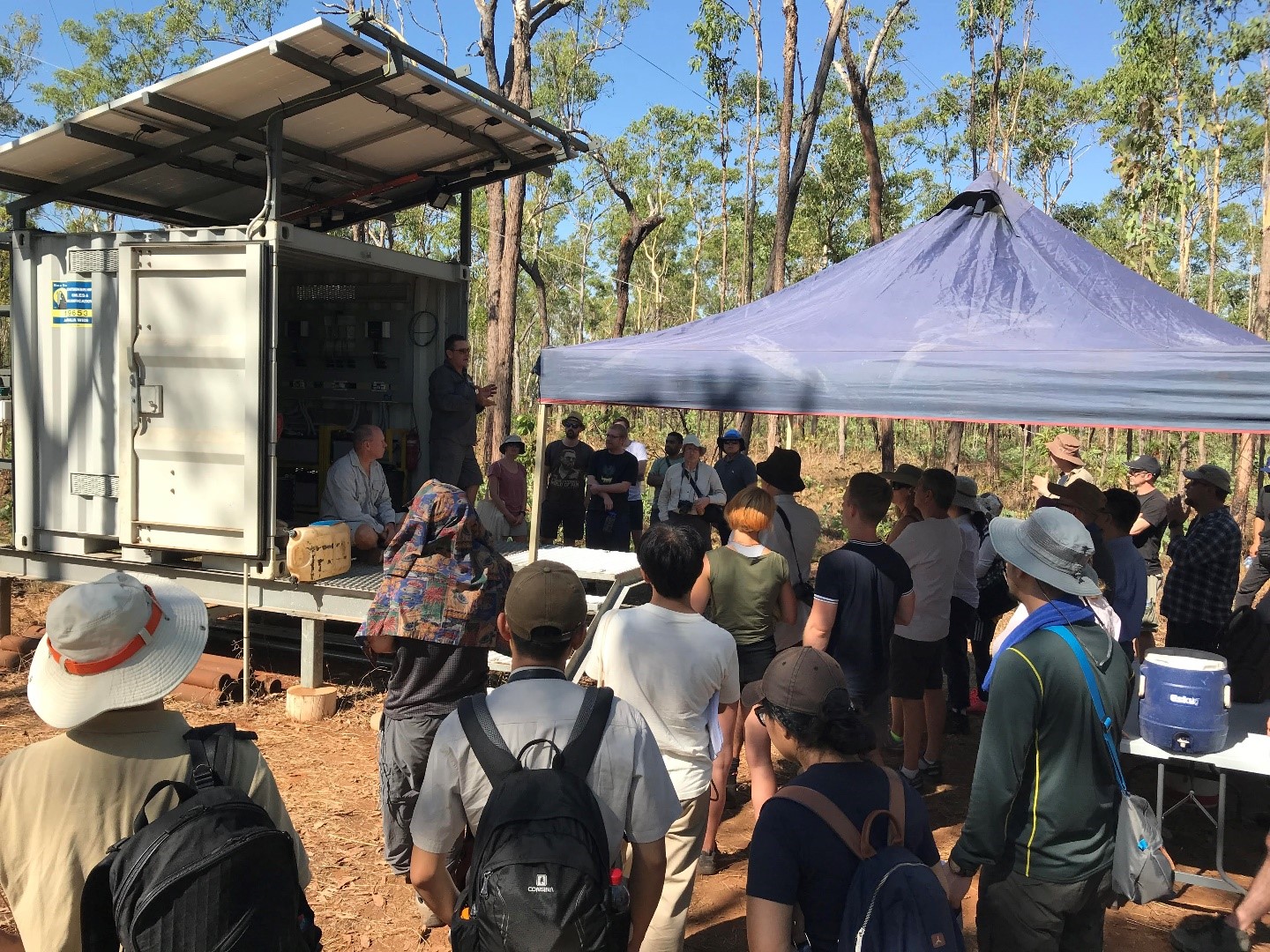OzFlux-AsiaFlux Joint Conference ‘Ecosystems, climate & land-use change across Asia & Australasia’

The inaugural OzFlux-AsiaFlux Conference was held in Darwin this year, hosted by Charles Darwin University’s Research Institute of the Environment and Livelihoods (RIEL). The conference (OAFlux18) addressed regionally specific issues associated with ecosystems, climate and land use change impacts. OzFlux and AsiaFlux are nationally and internationally focused ecosystem research networks that provide the Asian, Australasian and global ecosystem modelling communities with consistent observations of energy, carbon and water exchange between the atmosphere and key terrestrial ecosystems. The two networks manage approximately 130 sites across 9 countries spanning the Asia-Pacific region from 45S to 70N latitude.

Plenary speaker at OAFlux18 Prof Hiroyuki Muraoka from the River Basin Research Centre, Gifu University, Japan.
Approximately 120 delegates attended the conference in Darwin, which featured a technical workshop, the conference and a field trip to the TERN funded Savanna SuperSite in Litchfield National Park.
The technical workshop provided theoretical and practical understanding of the eddy covariance method for researchers new to the method, from site selection criteria to hardware and post-processing software and analysis approaches. The workshop was led by Dr Peter Isaac (TERN) and Dr James Cleverly (UTS) with a significant input from leading sensor manufacturers, Licor Inc., ICT International and Campbell Scientific who demonstrated the latest sensors and software systems for delegates.
The conference themes covered process understanding of ecosystems, impacts of climatic extremes, disturbances, greenhouse gas emissions and land use change. Natural, managed and agricultural ecosystems across the region were featured in the presentations and posters, including three plenary speakers, including OzEWEX’s co-chair, Professor Albert van Dijk who provided a superb overview of the importance of flux observations in modelling coupled water and carbon cycles.
The field trip was very well attended with 90 staff, delegates and media heading to the Savanna SuperSite in Litchfield National Park. The large party was organised into two groups with a waterfall tour through the park and then a site visit to the Litchfield Flux Tower site.

Litchfield National Park Savanna Supersite: Prof Jason Beringer and Dr Andrew Edwards outline the major monitoring and research activities at the Supersite.
On site speakers included Professor Lindsay Hutley as the site leader, Professor Jason Beringer (UWA) and Dr Andrew Edwards (Darwin Bushfires Research Centre). The goals of the monitoring program, site history, current management and infrastructure were described for delegates.
OAFlux18 was well supported by sponsorship, with major contributions from the Australian Centre for International Agricultural Research (ACIAR), the NT Government Department of Environment and Natural Resources (DENR) and the Terrestrial Research Network (TERN). Support was also provided by the National Institute for Environmental Studies Japan, and South Korea’s National Centre for Agro Meteorology. Sponsorship and involvment with the Technical workshop came from our Silver Sponsors, Licor Inc, Campbell Scientific and ICT International.
A major legacy from the conference will be a Special Issue of Elsevier’s journal Science of the Total Environment entitled “Ecosystems, climate and land use change across Asia and Australasia”.
Planning will begin soon for the 2nd OzFlux-AsiaFlux to be held in an Asian partner agency.

